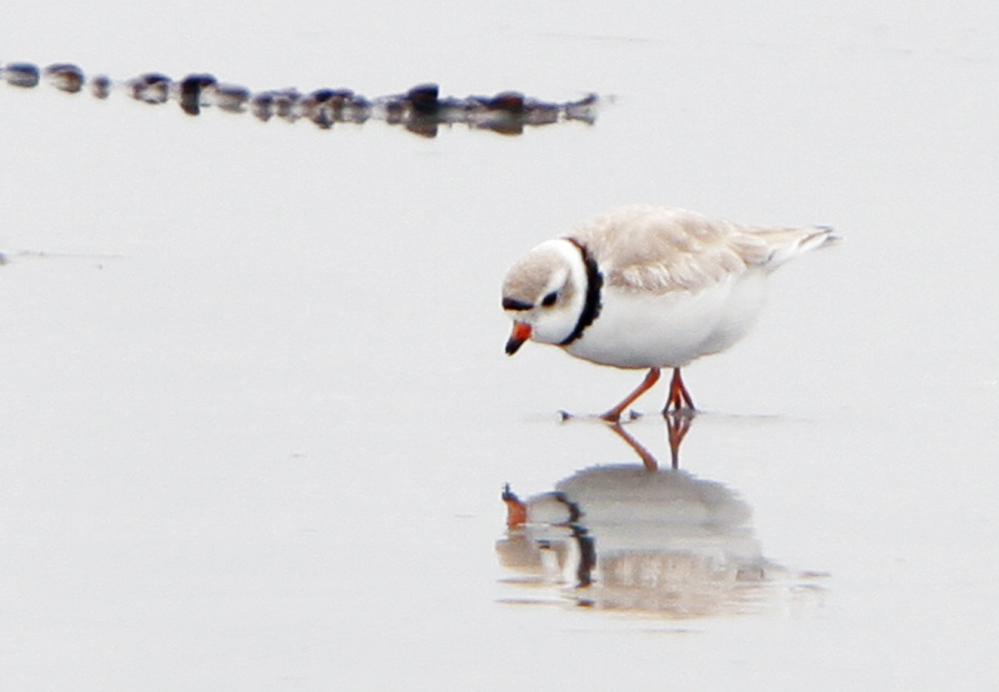LONG BEACH TOWNSHIP, N.J. — Scientists have some rare good news about an endangered shorebird: The New Jersey population of piping plovers is on the rise.
While the birds are still at risk, their numbers increased by 17 percent this year, to 108 pairs.
“We’re cautiously encouraged,” said Bob Considine, a spokesman for the state Department of Environmental Protection. “This is a very good trend for a state-endangered and federally threatened bird, but it’s important to remember it isn’t out of the woods.”
The Conserve Wildlife Foundation of New Jersey, which works with the DEP to study and count the birds at 19 active nesting sites across the state, released the figures late Thursday. Todd Pover, the group’s beach nesting bird project manager, said Superstorm Sandy actually helped the birds by scattering sand along coastal areas, creating the ruts and depressions in which the birds settle.
“Piping plovers prefer sparsely vegetated low-lying habitat where they can be camouflaged,” he said. “When the sand is spread across a wide area, it actually creates new habitat for them.”
The latest study showed the statewide fledgling rate was 1.29 birds per pair, down slightly from 2014, when the rate was 1.36 fledglings per pair, but above the 1.25 fledgling rate that scientists believe is necessary to maintain the Atlantic coast population of piping plovers.
Northern Monmouth County has the largest percentage of pairs in the state (55 pairs, or 51 percent of the total), with the Gateway National Recreation Area at Sandy Hook Unit accounting for most of them. The region comprising North Brigantine Natural Area and the Holgate and Little Beach Units of the Edwin B. Forsythe National Wildlife Refuge accounted for the other significant concentration of breeding pairs in the state (43 pairs, or 40 percent of the statewide total).
The Holgate section of Long Beach Township had the largest jump in abundance for any individual site, doubling its breeding pairs to 24 this year.
The news was not so good in Cape May County, where the piping plover population continues to decline. The coastline between Ocean City and Cape May Point saw just eight pairs in 2015, compared with 11 pairs in 2014, and 43 pairs in 2004 at its peak. New Jersey Audubon and other groups continue to work to restore habitat in Stone Harbor and other spots in the region.
“The Cape May County area, which was once one of the most importance regions for the species, has performed poorly and continues to do so,” said David Mizrahi, a vice president at New Jersey Audubon, who said reversing that trend is a top priority.
The piping plover remains on the endangered species list in New Jersey and the threatened species list federally.
The New Jersey population is still below its peak of 144 pairs in 2003.
Along the U.S. East Coast from North Carolina to Maine and the Canadian Maritime Provinces, there were about 1,790 pairs of piping plovers in the most recent range-wide study in 2013. The number is up from 790 pairs in 1986, but the growth has leveled off recently, according to the U.S. Fish and Wildlife Service.
Send questions/comments to the editors.



Success. Please wait for the page to reload. If the page does not reload within 5 seconds, please refresh the page.
Enter your email and password to access comments.
Hi, to comment on stories you must . This profile is in addition to your subscription and website login.
Already have a commenting profile? .
Invalid username/password.
Please check your email to confirm and complete your registration.
Only subscribers are eligible to post comments. Please subscribe or login first for digital access. Here’s why.
Use the form below to reset your password. When you've submitted your account email, we will send an email with a reset code.